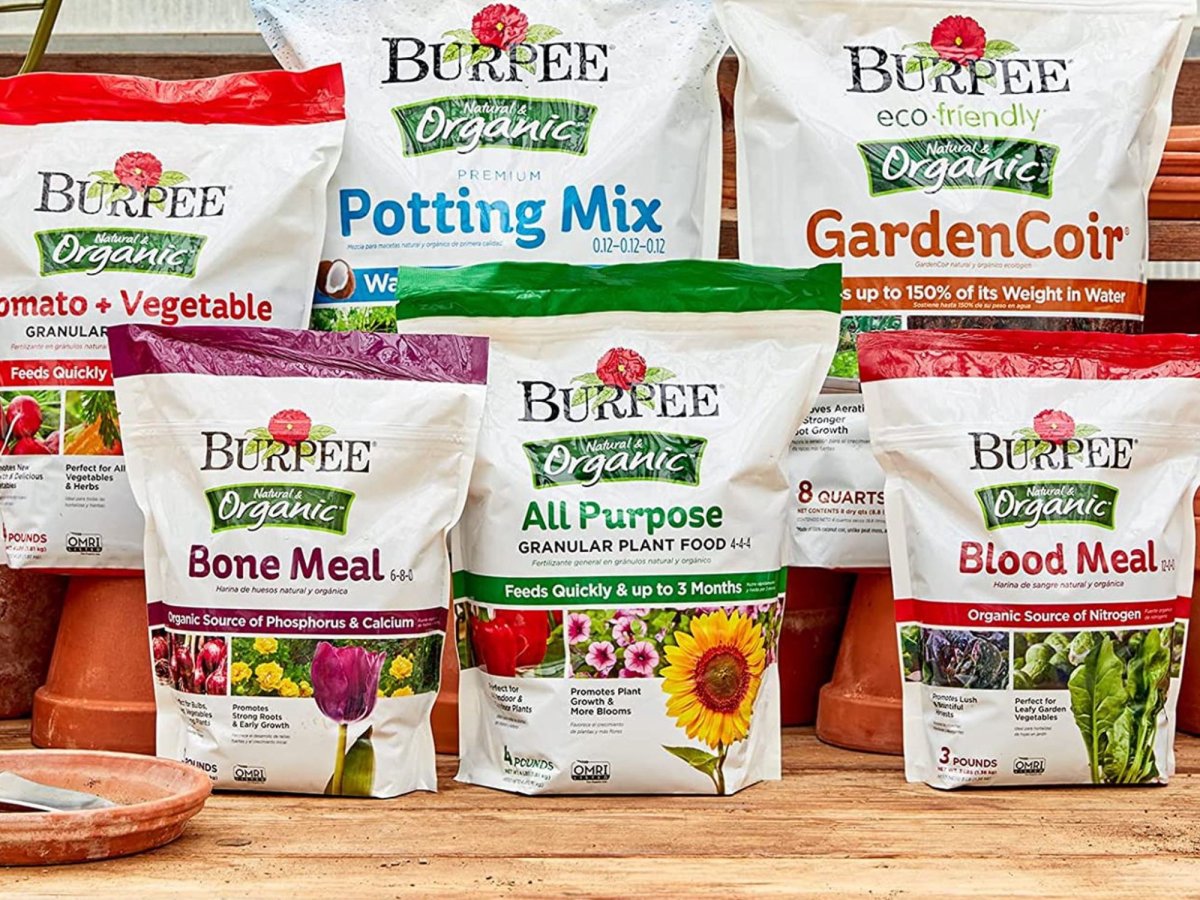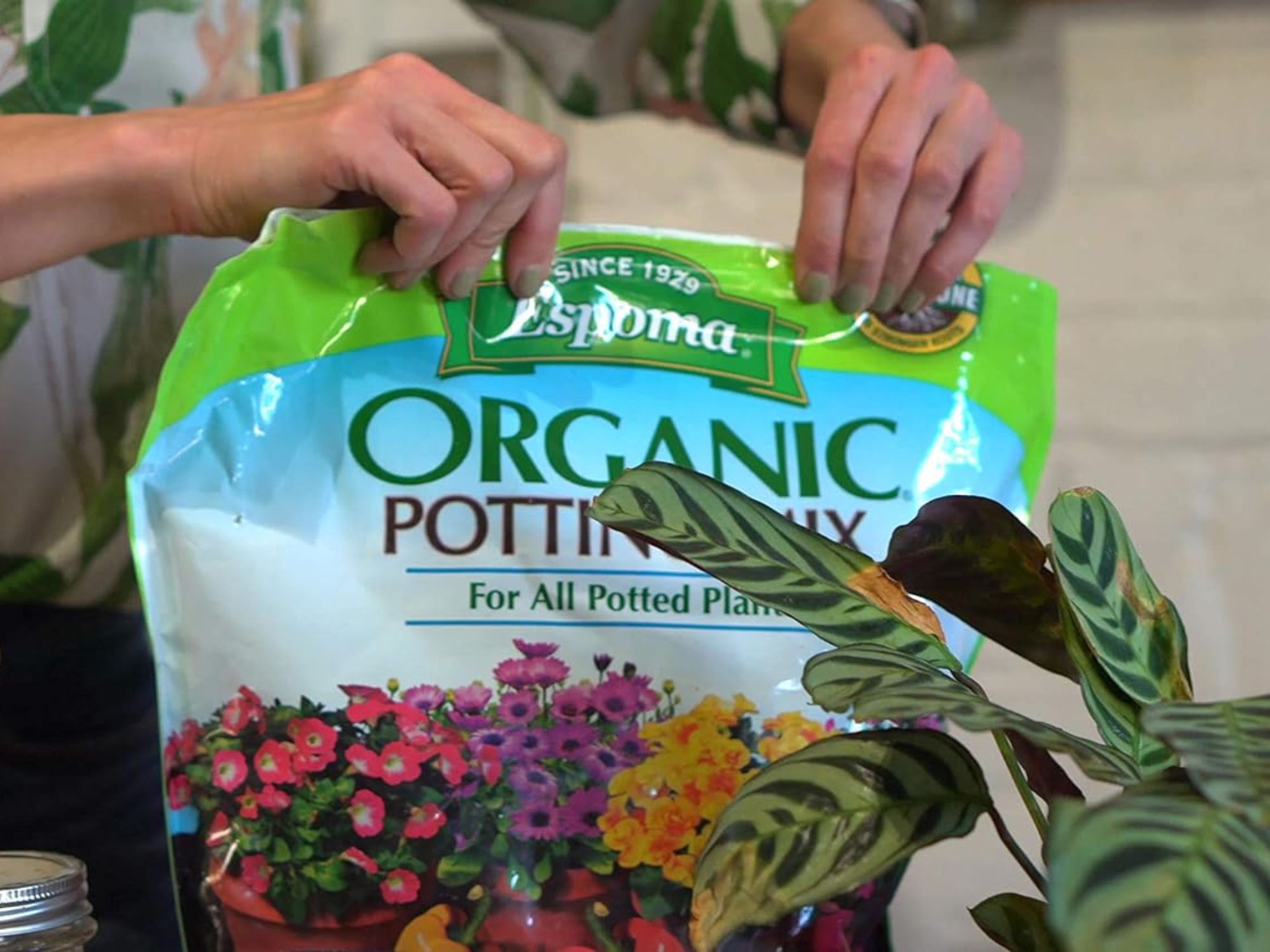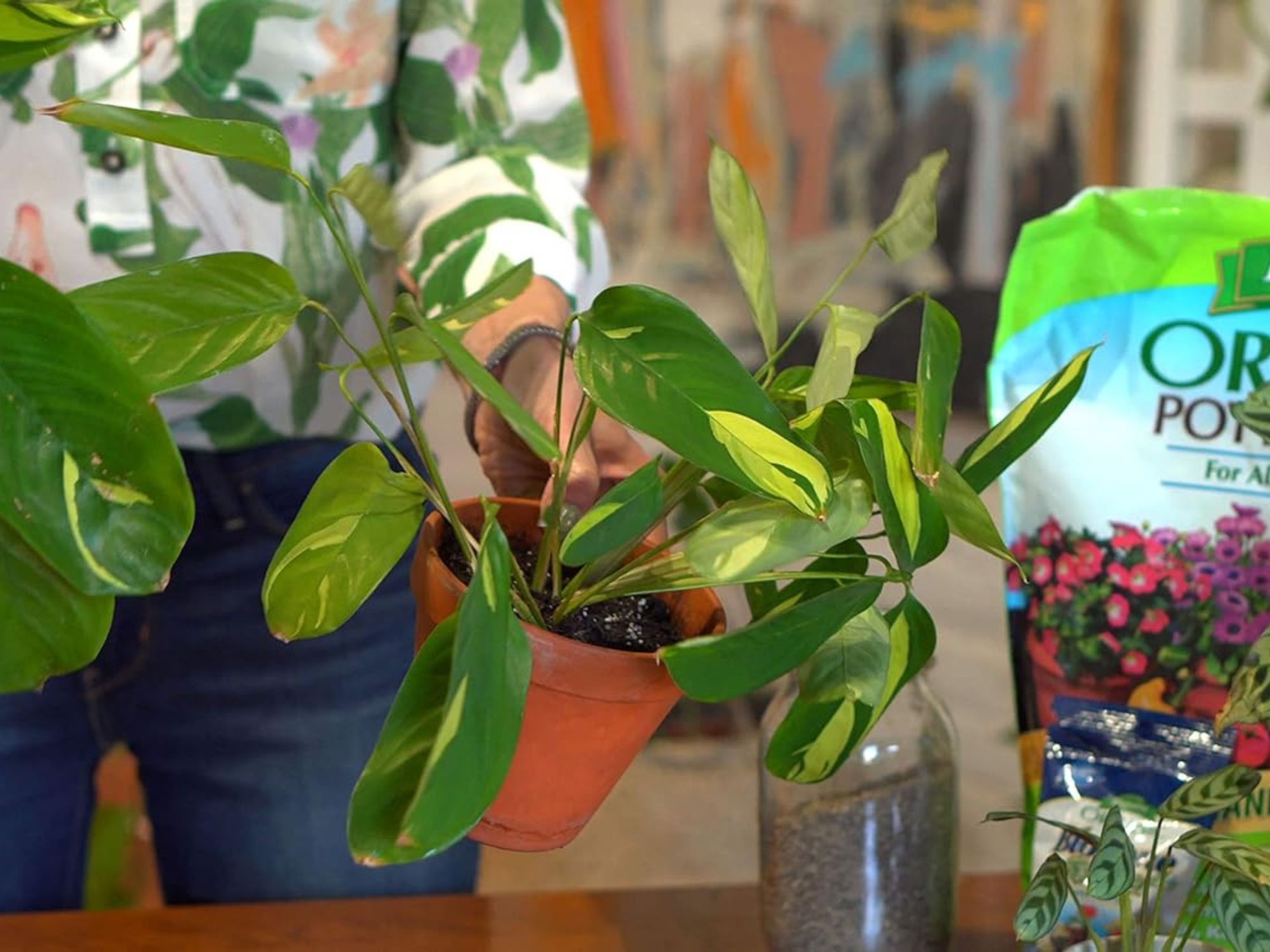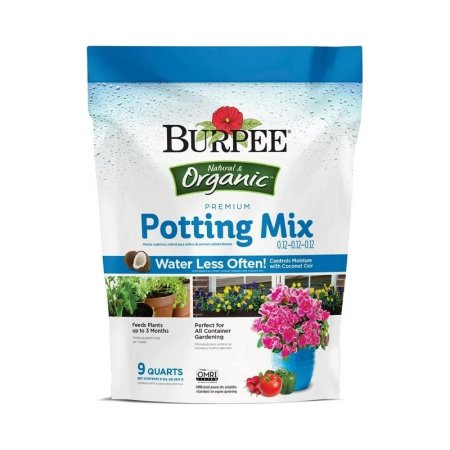
We may earn revenue from the products available on this page and participate in affiliate programs. Learn More ›
Sunlight and water are essential for houseplants to thrive, but did you know choosing the right kind of potting soil can make all the difference, too? Not all planting soils are created equal, just as not all plants have the same growth habits. Finding the best potting soil will help indoor plants grow happily ever after.
Growing plants successfully indoors requires the right combination of light, humidity, and nutrients. Since a plant’s nutrients come from the soil, indoor plants require careful attention to the potting soil ingredients, including any fertilizers or other additives. While you certainly can tackle DIY potting soil, buying premade soil for plants is frequently just as cost-effective.
We recently researched 10 different products, examining factors such as ingredients, cost, and customer reviews. We also talked directly to an indoor plant grower to determine the best potting soil for indoor plants.
Best Overall
Burpee Organic Premium Potting Mix
Product Specs
- Key ingredients: Coco coir
- Nutrients: Fertilizer
- Quantity: 9 quarts
- Organic: Yes
What We Like
- Uses sustainable coco coir to retain moisture
- Built-in, slow-release fertilizer
- Organic Materials Review Institute (OMRI) listed for organic use
- Well-draining soil keeps away rot or mildew
- Can be used in indoor or outdoor pots
What We Don’t Like
- Some users complain of fungus gnat infestations
- Relatively small bag of potting soil compared to others
- May need added perlite for succulents or similar plants
In the world of gardening, Burpee is a seed authority, so it’s not surprising that this all-purpose potting soil received countless favorable reviews as an excellent potting soil for indoor plants and starting seeds or cuttings. It contains coconut coir, the fibrous layer surrounding coconut shells, a prized ingredient for retaining moisture.
A small percentage of users complained of fungus gnat infestations. This may be a result of a too-moist environment, so users may want to observe their plants closely in the days following transplanting. However, this blend is noted for being fast draining, which reduces the likelihood of an infestation. The potting mix contains a slow-release, organic fertilizer, ensuring steady, healthy plant growth. It has been certified organic by the OMRI.
Get the Burpee potting soil for indoor plants at Amazon, Ace Hardware, or Walmart.
More Potting Soil for Indoor Plants Worth Your Money

There are a number of great options for anyone in the market for indoor plant potting soil. The following are all highly rated by shoppers, and many include the same key ingredients you can find in our overall winner.
- FoxFarm Ocean Forest Potting Soil Mix, available at Amazon, Ace Hardware, or The Home Depot.
- Miracle-Gro Indoor Potting Mix, available at Amazon, Lowe’s, The Home Depot.
- Espoma Organic Potting Soil Mix, available at Amazon or Walmart.
- Black Gold All Organic Potting Soil, available at Amazon, Ace Hardware, or Walmart.
- Miracle-Gro Houseplant Potting Mix, available at Amazon, The Home Depot, or Walmart.
- Back to the Roots Indoor Potting Mix, available at Amazon or Target.
- Better Gro Special Orchid Mix, available at Amazon (2-pack), Lowe’s, or The Home Depot.
- Hoffman Organic Cactus and Succulent Soil, available at Amazon or Walmart.
- Leaves and Soul Fiddle Leaf Fig Soil, available at Amazon.
How We Chose the Best Potting Soil for Indoor Plants
To determine which indoor plant potting soil would top our list, we evaluated 10 different soils and considered several aspects to curate a well-researched selection. We also looked at customer reviews, including common complaints, ingredients, eco-friendliness, availability, and price.
Indoor plants require well-draining potting soil, so ingredients such as perlite, peat moss, sphagnum moss, and bark can help ensure plants don’t end up overwatered. Potting soil tends to have fewer nutrients than planting mix, so we considered what organic matter or additives would contribute to the plant’s health and growth. For a few products, we looked at potting soil mixtures blended for specific plants such as succulents or orchids. While not all of the soils we researched were organic, we did factor in the overall quality of ingredients and nutrients contained in the soil, which led us to several organic blends. Many favorable customer reviews also lead toward organic or natural indoor plant soil blends.
What to Consider When Choosing Potting Soil for Indoor Plants

While you may grow plants outside in containers, don’t confuse planting mix or garden soil with a potting mix for indoor plants. Even outdoor potting soil blends are not the same, as they may be formulated to hold moisture and withstand those elements that dry out the soil too quickly, like sun and wind. These moisture retention properties may be too much for indoor plants.
“Indoor potting soil is typically light and fluffy, designed for good moisture retention while allowing excess water to drain easily if pots have proper drainage,” explains Hanfei Niu of NiuPlants, a top plant grower and vendor in the Palmstreet app. “The balance is crucial for indoor plants since poor drainage can lead to root rot. The mix also allows proper air circulation around roots. Many indoor mixes are sterile, meaning they’re free from harmful pathogens, but some may include beneficial microbes and fertilizer that boosts plant growth.”
Plant Type
The type of plant will have a big impact on whether or not you can go with a general indoor potting mix or if you need a unique blend. While many common indoor plants can use the same type of general indoor plant blend, some soil for houseplants is formulated specifically for those plants, such as fiddle-leaf figs, African violets, and Monstera plants. Cactus and succulents require even more drainage than houseplants and should be planted in potting soil formulated to meet these needs. Most epiphytic orchids should be planted in a medium that is primarily bark, but some are terrestrial varieties that like a richer blend. When starting seeds, we typically prefer a seed starting mix to regular indoor potting soil.
Ingredients
Contrary to the name, many potting soils for indoor plants do not contain any actual dirt; instead, they are a soilless blend of ingredients that become a lighter, fluffier planting medium for indoor plants. This is optimum partly because it allows the roots to expand in a softer planting medium than heavy garden soil. Common ingredients in potting soil for indoor plants include:
- Perlite for drainage
- Vermiculite for drainage
- Sphagnum peat moss
- Coconut coir
- Pine bark
- Seaweed
Some potting soil blends may also have a type of plant fertilizer, such as bone meal or alfalfa, as well as beneficial microbes.
Drainage and Moisture Retention
When watering plants, well-draining potting soil ensures they get the moisture they need without the danger of root rot. It also helps prevent a buildup of mildew, which can sometimes be an issue for indoor plants. Ingredients like perlite or sand can be added to any blend to increase drainage. At the same time, good soil for indoor plants, such as sphagnum moss and coconut coir, will also help plants retain the moisture they need.
“Potting soil ensures good water drainage, which is essential for indoor plants to prevent root rot, bacterial growth, and fungus development from overwatering,” Niu says. “Since it doesn’t contain actual soil or significant organic matter, it offers better control over moisture levels and prevents the compacting issues that outdoor soil might cause in pots.”
Organic vs Nonorganic
Simply put, organic potting soil for indoor plants will contain only those ingredients that are organic or naturally occurring. These may be seaweed, worm castings, or bat guano. Many of the best organic fertilizers tend to break down slowly, which can contribute to the long-term health of a plant. Organic indoor potting soil will not contain any synthesized ingredients.
Nonorganic soil may contain synthesized ingredients, specifically fertilizers. These can be a nice boost for fast plant growth, but they can also result in stress to the plant. Not all nonorganic blends will contain synthesized ingredients, so be sure to check the label carefully if considering organic vs. nonorganic.
FAQs
With so many considerations when shopping for the best potting soil for indoor plants, it’s not uncommon for questions to arise. Read on to see some of the most frequently asked questions about these products.
According to Niu, “It’s important to refresh or replace [potting soil] every 12 to 18 months, as it can lose its nutrients over time.” Not only will the plants no longer have the nutrients they need, but replacing the potting soil can help cut down the risk of pests and diseases.
Not all houseplants require the same amount of water, so there is no single answer to this question. Consider the natural growing environment for the plant. For example, a Monstera that comes from a lush, tropical environment is going to want more water than a cactus. As a very general rule of thumb, allow the soil to dry out at least an inch or two between waterings, but keep in mind that some plants like their soil to dry out completely between waterings.
The best method to repot plants is to water them a day or two before repotting so that the soil is not so dry that it crumbles away from the roots as the plant is transplanted. The soil should not be soaking wet or soggy.


